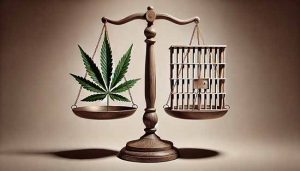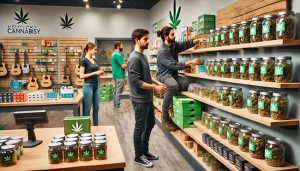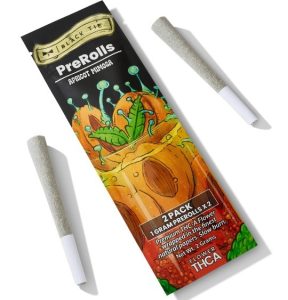How to Grow A Cannabis Cup Winner
Every year, HIGH TIMES sponsors five Cannabis Cup competitions. This
year, we decided to take a look at over 20 different Cup winners drawn
from three of the contests in a trio of cities to see if we could
determine how the best herb is grown. Here’s what we found.
Seed vs. Clone
It’s the timeless debate: Which starting technique results in better bud, seeds or clones?
Of course, we know that there are pitfalls associated with each
method. With seeds, you have the issue of longer propagation times as
well as the problem of sexing your plants. The latter won’t be an issue
if you choose to go with feminized seeds, but that can lead to a whole
other set of problems, since many feminized seeds are developed using
unnatural chemical processes and, if they haven’t been properly
backcrossed a few times, can produce heavily hermaphroditic plants.
When it comes to clones, some growers complain that plants’ vigor is
lost when compared to starting with seeds. This can be especially true
if you’re talking about the new F1 generation seeds that are a product
of hybridization, since hybrid vigor is a scientifically proven benefit
of breeding with seeds. Clones may also have difficulty producing
initial roots and may not develop large enough root structures overall
to sustain heavier yields.
Still, there are some positive aspects to using either seeds and
clones. As with a human embryo, seeds possess natural hormones that
allow a plant to root strongly and develop properly throughout its
vegetative stage. Good seeds are generally thought to result in
better-growing and better-yielding plants as compared to clones.
With clones, however, growers have the advantage of uniformity and
consistency. There’s no need to fumble over sexing out the males, and if
you choose a good mother plant, there is less worry about disease and
pest problems.
So which way should you go when starting your garden? As it turns
out, from the 23 Cup champions that we examined for this article, three
were grown from seed while 20 came from clones.
Indoor, Outdoor or Greenhouse?
People also ask which is better: indoor or outdoor cannabis? This
question has many different facets and can be answered on a variety of
levels. But in terms of growing the highest-quality cannabis—which means
giving preference to a strain’s natural phenotypes rather than forcing
heavier growth to achieve higher yields (a consideration that certainly
plays a predominant role in Cannabis Cup competitions, where the entries
are scored on factors such as flavor and potency rather than on the
weight harvested) — we can now answer this question a bit more
definitively.
Let’s start by examining a few important pros and cons associated
with each type of garden. Outdoors, of course, growers can take
advantage of both the full spectrum and unmatched power of the sun.
However, outdoor growers must also contend with Mother Nature’s
downside, including storms, diseases and pests. This can make garden
maintenance a labor-intensive effort throughout the hot summer months.
At a minimum, the best outdoor growers plan on spending an hour per
plant, per day, doing the necessary pruning and trellis work that it
takes to grow 12- to 14-foot trees.
Indoor growers, on the other hand, can take back control of nearly
every aspect of their garden. Many people tend to think that this adds
up to a lot more work (especially during the initial construction of the
growroom), but in fact both indoor and outdoor gardens — and
greenhouses too, for that matter — require serious labor in their
initial setup. However, it is true that indoor growrooms, on average,
likely will require more time out of the day for growers, as they not
only have to maintain the plants but also the grow system, which can
have many moving parts that need daily check-ups and (often)
maintenance.
Greenhouses, from an agricultural and plant-science perspective,
offer the best of both worlds when it comes to cultivation in theory. In
practice, however, the best results are not always achieved.
This is because, while growers do get the added benefit of the sun
within an enclosed environ, the unpredictable nature of the weather —
including the temperatures that the sun can create — is much more
difficult to control than in
a standard indoor growroom. A lot of specialized equipment as well as
diligent attention to atmospheric conditions will be required to achieve
successful harvests within a greenhouse. And since it’s not a given
that the sun will shine heartily every day — to say nothing of dealing
with rainy weeks — greenhouse growers may still need to utilize
artificial lighting to keep their gardens flourishing.
The general consensus among plant scientists and horticulturalists
(as much as it pains many of us to admit it) is that the highest-quality
fruits and flowers are achieved in a controlled, indoor grow
environment. In support of this claim, 23 out of the 23 Cup winners we
examined for this article were raised in an indoor grow.
System Type & Medium Selection
Another frequently asked cultivation question relates to choosing the
proper medium for your plants. The answer to this question, however,
directly correlates to the type of grow system employed, and………You can read the full article on the High Times Website
This article was written by Nico Escondido for High Times. All credit goes to them.
Follow @CannabisCountry

(c) Cannabis Country – Read entire story here.





